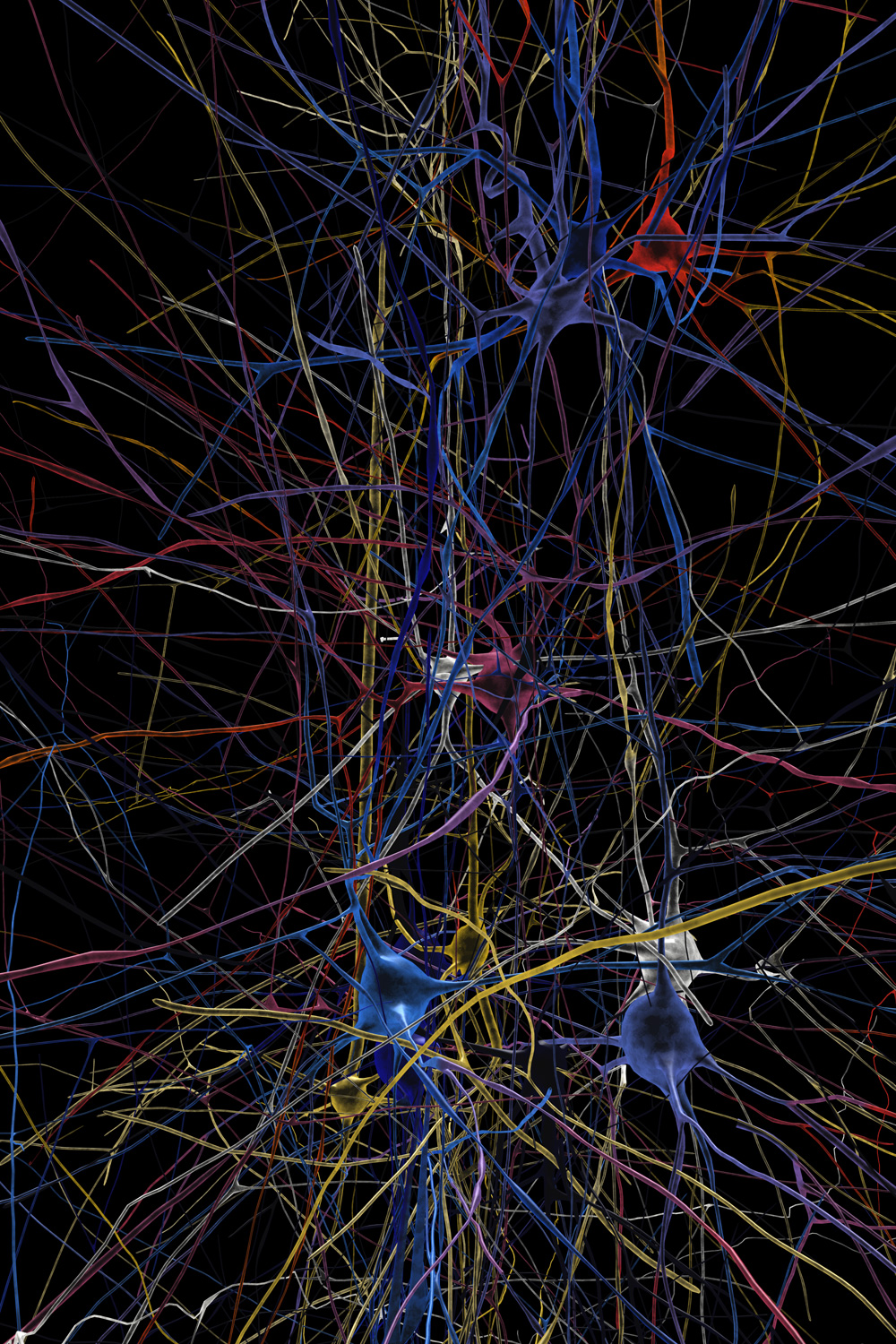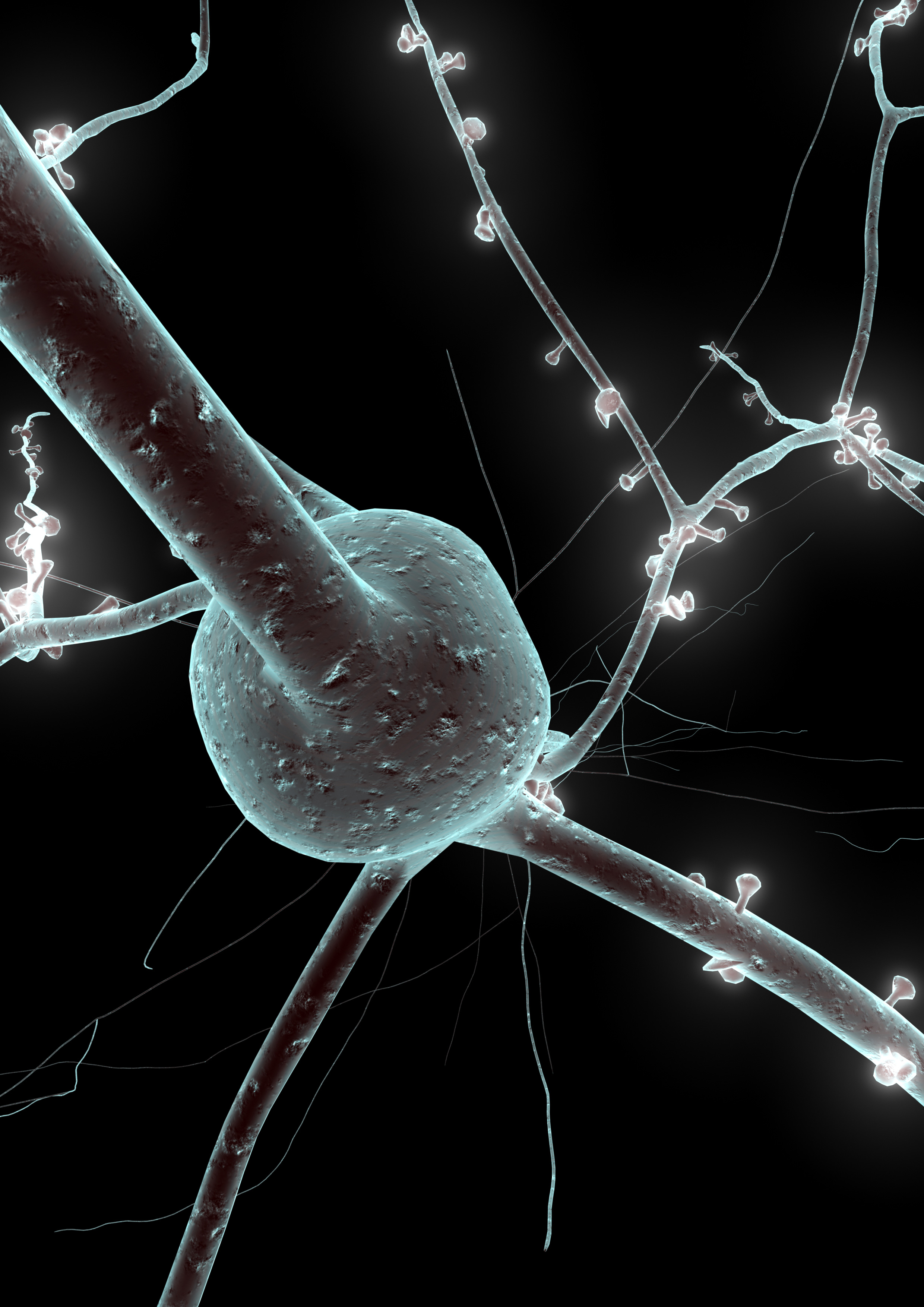The Human Brain Project has officially begun
Scientists from the 135 partner institutions meeting in Switzerland this week
October 7, 2013

Simulated
neuronal network showing 3D shapes of individual cells (reconstructed
from lab data). Blue cells are silent, red cells are firing. (Credit:
EPFL/Blue Brain Project)
Over the course of the coming week, neuroscientists, doctors, computer scientists, and roboticists will fine-tune the project’s details.
Six months after its selection by the EU as one of its FET Flagships, this project of unprecedented complexity, co-funded by the EU with an estimated budget of €1.2 billion, has now been set in motion.
With more than 130 research institutions from Europe and around the world on board and hundreds of scientists in a myriad of fields participating, the Human Brain Project is the most ambitious neuroscience project ever launched.
Its goal: develop methods that will enable a deep understanding of how the human brain operates. The knowledge gained will be a key element in developing new medical and information technologies.
Six research platforms
The Human Brain Project’s initial mission is to launch its six research platforms, each composed of technological tools and methods that ensure that the project’s objectives will be met.
These platforms are: neuroinformatics, brain simulation, high-performance computing, medical informatics, neuromorphic computing and neurorobotics.
Over the next 30 months, scientists will set up and test the platforms. Then, starting in 2016, the platforms will be ready to use by Human Brain Project scientists as well as researchers from around the world. These resources — simulations, high-performance computing, neuromorphic hardware, databases — will be available on a competitive basis, in a manner similar to that of other major research infrastructures, such as the large telescopes used in astronomy.

A
3D model of a neuron: reconstructed from lab data. The sprouting
protuberances are pre-synaptic terminals, the points where theneuron
will form connections (synapse) with other neurons. (Credit : EPFL/Blue
Brain Project)
In the field of neuroscience, the researchers will have to manage an enormous amount of data — in particular, the data that are published in thousands of scientific articles every year.
The mission of the neuroinformatics platform will be to extract the maximum amount of information possible from these sources and integrate it into a cartography that encompasses all the brain’s organizational levels, from the individual cell all the way up to the entire brain.
This information will be used to develop the brain simulation platform. The high-performance computing platform must ultimately be capable of deploying the necessary computational power to bring these ambitious developments about.
Medical doctors associated with the project are charged with developing the best possible methods for diagnosing neurological disease. Being able to detect and identify pathologies very rapidly will allow patients to benefit from personalized treatment before potentially irreversible neurological damage occurs.
This is the mission of the medical informatics platform, which will initially concentrate on compiling and analyzing anonymized clinical data from hundreds of patients in collaboration with hospitals and pharmaceutical companies.
The Human Brain Project includes an important component whose objective is to create neuro-inspired technologies. Microchips are being developed that imitate how networks of neurons function — the idea being to take advantage of the extraordinary learning ability and resiliency of neuronal circuits in a variety of specific applications. This is the mission of the neuromorphic computing platform.
The neurorobotics platform will focus on integrating neural network simulations into robots (initially virtual ones), who will benefit from new aptitudes such as learning ability or resiliency.
Next milestone: 2016
The platforms will be set up as part of a global, coherent project. For example, the scientists will depend on the brain simulation not only to better understand the mechanisms of neurological disease and identify new therapeutic targets, but also to update functional principles or even accelerate the development of neuro-inspired technologies.
In addition, these same technologies could contribute to meeting the simulation’s computational requirements.
The success of the Human Brain Project depends in large part on the dynamics of exchange that will occur between its six platforms.
The scientists involved in the Human Brain Project now have two and a half years to finalize the research platforms. Once these are established, researchers will have at their disposal the infrastructures, tools and methods they need in order to meet their objectives.
Now, nine months after its selection as a EU Flagship, the project is officially on its way.
(¯`*• Global Source and/or more resources at http://goo.gl/zvSV7 │ www.Future-Observatory.blogspot.com and on LinkeIn Group's "Becoming Aware of the Futures" at http://goo.gl/8qKBbK │ @SciCzar │ Point of Contact: www.linkedin.com/in/AndresAgostini
 Washington
Washington